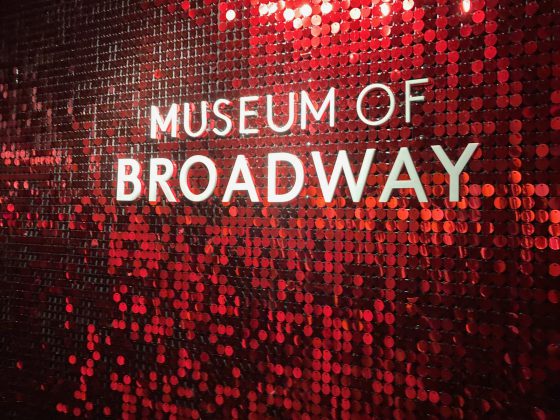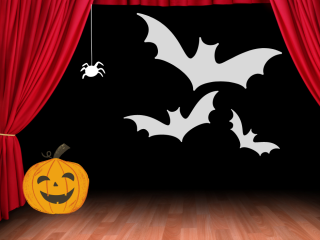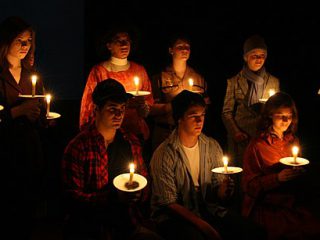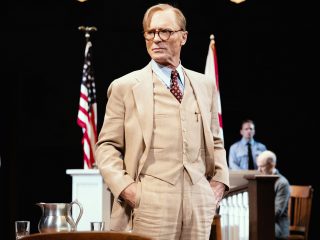By 1993, more than one million Americans had become infected with a new virus that scientists had termed Human Immunodeficiency Virus, or HIV. Acquired Immunodeficiency Syndrome (AIDS), a series of complications caused by HIV infection, would kill 41,920 Americans that year. New drugs were being developed that could help delay the progression of HIV to AIDS, but they were exceedingly expensive and not always readily available. Fear-induced prejudice and misinformation about how the virus is transmitted remained rampant. It was against that backdrop that Tony Kushner’s Angels in America, an epic, raw, and metaphorical examination of HIV and homosexuality in the United States premiered on Broadway. This year marks the 30th anniversary of that debut. Given the inevitable parallels to the COVID pandemic, the timing is an interesting bit of happenstance in the mythology of the play’s history.
Angels in America officially premiered in 1991 at the small Eureka Theatre in San Francisco. At that point, it was essentially a low-budget fringe production. After a series of workshops, staged readings, and productions in both the United States and London, the play evolved and opened on Broadway on May 4, 1993. It was unlike anything Broadway audiences (or any audience, for that matter) had seen before. The play premiered at the Walter Kerr Theatre under the direction of George C. Wolfe, who had earned national recognition in 1991 after the premiere of his musical Jelly’s Last Jam, about jazz musician Jelly Roll Morton. The Broadway run began with the play’s first part, titled Millennium Approaches, with part two, Perestroika, joining in repertory later that year. Between parts one and two, the play is a seven-hour epic that floats almost seamlessly between the real and the surreal, the worldly and the other-wordly. There are moments of magic-ghostly ancestors of Prior Walter appear and disappear out of nowhere, a character walks through a refrigerator into the Arctic, and of course the famous moment in which (spoiler alert) an angel comes crashing through the ceiling. And that’s just part one. A press reel featuring clips from the Broadway production offers a glimpse into the play’s style.
To say that Angels in America was a hit is something of an understatement. A New York Times review called it “the most thrilling American play in years”. Rocco Landesman, one of the play’s chief financiers, cited it as “the most important play in a generation”. To be fair, critical acclaim wasn’t quite universal. Time Magazine described some of the acting as “bland” and cited the play’s much more sprawling second part as “deeply flawed”. Critic Lee Siegel dismissed the play as “a second-rate play written by a second-rate playwright” and queer theorist Leo Bersani called it “muddled and pretentious”. Nevertheless, the play’s arrival and success on the Great White Way proved that non-musical productions could be financially viable on Broadway and ushered in a new era for the industry. When the Angel comes crashing through Prior Walter’s ceiling at the end of Millennium Approaches, she announces “the messenger has arrived”. In more ways than one, it certainly had.
Despite some mixed critical reception, the play’s Broadway production was showered with awards. Between both parts, it was nominated for 15 Tony Awards and won seven. Kushner would also win that year’s Pulitzer Prize for Drama. Since then, it’s been produced around the world. It was turned into a miniseries for HBO in 2003 starring Al Pacino, Meryl Streep, Justin Kirk, and Jeffrey Wright reprising his Broadway role as Belize. In 2004, an opera adaptation of the play debuted in Paris. In 2017, the National Theatre in London produced a revival starring Andrew Garfield, Russell Tovey, and Nathan Lane. The production transferred to Broadway in 2018 and, like the London production, was showered with critical acclaim. Other revivals around the world have been met equally favorably, including one in 2018 at Berkeley Repertory Theatre featuring Stephen Spinella, Broadway’s original Prior Walter, as Roy Cohn. Not bad for a play that started at a tiny theatre in San Francisco.
To fully appreciate the impact of Angels in America, it’s important to understand the cultural picture at the time it came about. Tony Kushner started writing the play in 1988. At that point, understanding about HIV/AIDS and how the virus spreads was still emerging. Only six years earlier, it was referred to as “gay cancer” because the majority of those infected were gay men. San Francisco, a mecca and safe haven for gay men, was hit especially hard and became a Ground Zero in the fight not only against the virus, but against rampant stigma and a sluggish and apparently bemused response from the federal government. In the early 1980s, White House Press Secretary Larry Speakes and members of the press joked and laughed on three separate occasions when a reporter tried to ask about the issue. Audio clips of those exchanges were recently uncovered and turned into a short film called “When AIDS Was Funny”, which you can see here.
The theatre became one of the first institutions to respond to the crisis. The same is true for many cultural zeitgeists, but the theatre, disproportionately populated by gay men, was uniquely equipped to generate deeply visceral works spurred by what they were living through. By the turn of the decade, virtually everyone in the theatre, including Kushner, knew at least one person who had died from AIDS. So artists became activists. Larry Kramer’s The Normal Heart was among the first major plays that directly confronted the crisis. Kushner would follow it up with what he termed “our own AIDS play”.
I remember the first time I read the play, as a sophomore in college. I was spellbound. It wasn’t like any piece of theatre I’d read or seen before. It felt audacious. It was bitingly funny and achingly somber. The language was rich and melodic. I didn’t get a lot of it. But I read it again. And again. The more times I read it and the more I learned dramaturgically, the more I was able to unravel the themes and metaphors as well as the political contexts. I always appreciated it as a piece of theatre, but didn’t yet grasp what a critical piece of the canon it was. By the time I first engaged with it, the play was more than 20 years old. HIV/AIDS treatments had become much more readily available and the science was clear about how the virus can and can’t be spread. The stigma had been slowly chipped away. I remember talking about HIV in middle school science class, learning that the antiquated fear that HIV could be spread through casual contact or saliva was patently untrue. It was in that context that I experienced the play-with a level of privilege and Brechtian alienation from the cultural and political zeitgeist the play depicts. Enter COVID.
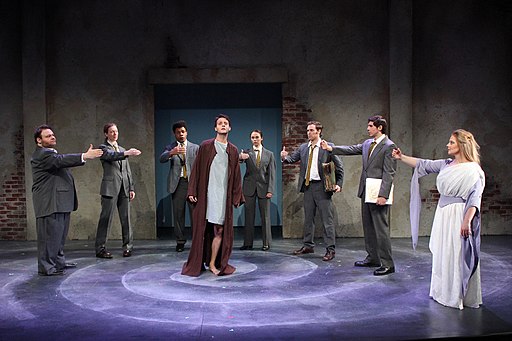
Reading Angels in America now, after all that we’ve experienced both individually and collectively, feels like discovering it in an entirely new way. The play is undeniably a period piece, anchored firmly in the zeitgeist of America in the 1980s. But in the wake of COVID’s ravages, there are themes and parallels that now resonate almost if not as viscerally and achingly as I have to imagine they did in 1993. I think particularly about the disproportionately devastating effects both AIDS and COVID had (and continue to have) on marginalized demographics. In both cases, access to cutting-edge treatment (especially early on) was largely determined by wealth and social status. Kushner’s imagined version of the powerful and influential Roy Cohn is able to get access to treatments that Prior Walter is not.
Though it’s being used more and more, the term “post-COVID” doesn’t quite feel right to me. We may be post-lockdowns and post-panic and post-wondering if we’re teetering on the edge of an apocalypse, but COVID is still very much present. We aren’t any more post-COVID than we are post-HIV, we’ve just evolved into a new existential chapter. We’ve undoubtedly made progress-especially when you consider the lightning-fast pace at which COVID vaccines were developed. And yet, 40 years after HIV was declared an epidemic and three years after COVID was declared a pandemic, there’s still a lot to do in the larger sense of the inequities in public health. I’ve always been moved by Prior Walter’s monologue that closes out Perestroika, but it’s especially poignant in the aftermath of a plague that’s now killed at least 6.8 million people:
“This disease will be the end of many of us, but not nearly all, and the dead will be commemorated and will struggle on with the living, and we are not going away. We won’t die secret deaths anymore. The world only spins forward…more life. The Great Work begins.”
Angels in America Part Two: Perestroika (Epilogue)
If you’re interested in reading more about Angels in America’s history, Slate has a fascinating oral history with Kushner and many of the creatives involved in the original production. The American Theatre Wing also has in-depth information about the play’s history.

